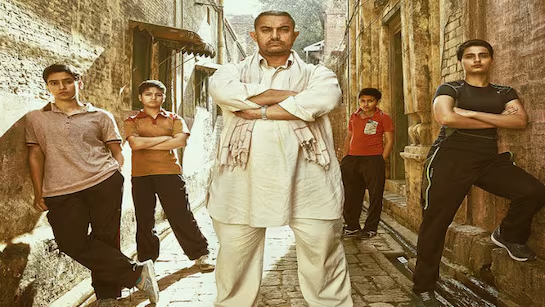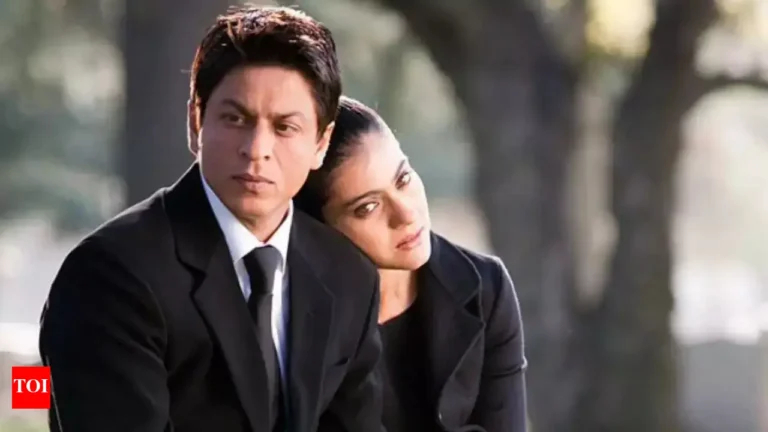Dangal Movie: A Triumph of Spirit, Strength, and Sisterhood
Introduction
Released in 2016, Dangal is not just a film; it is a masterpiece that transcends the boundaries of sports, drama, and family entertainment. Directed by Nitesh Tiwari and starring Aamir Khan, Dangal is based on the real-life story of Mahavir Singh Phogat and his daughters, Geeta and Babita Phogat. The movie narrates the powerful journey of how Mahavir, a former wrestler, trains his daughters to become world-class wrestlers in a male-dominated society. The movie’s universal themes of perseverance, empowerment, and family bonds have made it a global sensation, breaking box office records and leaving an indelible impact on audiences worldwide.
In this article, we’ll take an in-depth look at the film’s plot, characters, and the key lessons it imparts. We will also explore why Dangal remains one of Bollywood’s most impactful movies ever made.
1. The Story of Dangal: A Brief Overview
The film begins in the rural heartland of Haryana, where Mahavir Singh Phogat (played by Aamir Khan), a former wrestler, struggles with the fact that he couldn’t win an international medal for India. His dream of seeing his name etched in history is dashed due to financial constraints and the lack of support for wrestling in his region. However, Mahavir’s passion for wrestling never dies.
When Mahavir’s wife, Daya Kaur, gives birth to four daughters, Mahavir is disappointed. He desperately wanted a son who could fulfill his dreams. But his life takes a surprising turn when his two elder daughters, Geeta (Fatima Sana Shaikh) and Babita (Sanya Malhotra), display remarkable physical strength and an interest in sports, especially wrestling.
Despite the skepticism of his community and family, Mahavir decides to train his daughters to become wrestlers, pushing them through rigorous training and facing societal prejudices. As Geeta and Babita break stereotypes and rise in the world of wrestling, the film highlights their struggles, triumphs, and the deep bond they share with their father.
2. Characters in Dangal
Mahavir Singh Phogat (Aamir Khan)
Aamir Khan’s portrayal of Mahavir Singh Phogat was nothing short of transformative. His performance was a mix of intensity, emotion, and vulnerability. Mahavir is a father who goes to great lengths to fulfill his unfulfilled dream through his daughters. He is strict, yet loving and deeply supportive.
Geeta Phogat (Fatima Sana Shaikh)
Geeta, the elder of the two daughters, is the central character in the movie. She is portrayed as a resilient and ambitious young woman who eventually becomes India’s first female wrestler to qualify for the Olympics. Fatima Sana Shaikh’s dedication to the role was evident, and she carried the weight of the character with grace.
Babita Phogat (Sanya Malhotra)
Babita, the younger daughter, also has a prominent role. Though initially rebellious, Babita’s transformation into a world-class wrestler mirrors Geeta’s journey. Sanya Malhotra’s performance was widely praised for capturing the spirit of a fighter.
Daya Kaur (Hirani Phogat)
Daya Kaur, Mahavir’s supportive wife, plays a crucial role in the family dynamic. Though not as vocal about her role in the wrestlers’ journey, her belief in Mahavir’s dream adds emotional depth to the family unit.
3. The Making of Dangal: Behind the Scenes
The making of Dangal was an arduous yet inspiring journey. To portray Mahavir Singh Phogat, Aamir Khan went through a physical transformation, gaining a considerable amount of weight to accurately represent the older version of the character. His dedication to the role involved hours of intense training, not just to bulk up, but to also learn the technical aspects of wrestling.
The film also saw its female cast, Fatima Sana Shaikh and Sanya Malhotra, undergo extensive wrestling training. Both actresses trained for several months under real-life wrestlers to ensure that their wrestling scenes were as authentic as possible.
The film was shot primarily in the rustic regions of Haryana, which added to the authenticity of the setting. The filmmakers used a combination of natural light and rustic locations to showcase the rawness of the environment that Geeta and Babita grew up in.
4. Dangal: A Story of Gender Equality and Empowerment
At its core, Dangal is about defying gender norms and the societal pressures that limit women’s potential. The movie paints a vivid picture of the struggles that Geeta and Babita faced as young girls training in a sport dominated by men. From being ridiculed for participating in wrestling to being pressured to follow traditional roles as daughters, the Phogat sisters faced immense challenges.
However, their journey also symbolizes the breaking down of these barriers. Mahavir Singh Phogat, who refuses to acknowledge gender as a limitation, becomes the driving force behind his daughters’ success. The film celebrates women’s empowerment, highlighting how Geeta and Babita, despite all odds, became champions and role models for women in sports.
5. The Message of Determination and Discipline
One of the strongest messages in Dangal is the importance of determination and discipline. The Phogat sisters didn’t achieve success overnight. Their journey was filled with countless hours of practice, overcoming physical and mental fatigue, and enduring physical pain. Mahavir, despite his unwavering belief in them, had to instill the values of hard work, persistence, and sacrifice in his daughters.
The rigorous training and the strong father-daughter relationship underline the movie’s theme of perseverance. In the face of adversity, the Phogat family’s determination to stay committed to their goals is both inspiring and motivational.
6. The Real-life Impact of Dangal
Dangal was more than just a movie; it had a profound impact on the real-life Phogat family. The film brought Geeta and Babita Phogat into the limelight, inspiring a new generation of girls to take up wrestling and sports in general.
Geeta Phogat became India’s first female wrestler to qualify for the Olympics, and Babita also rose to prominence with her achievements in wrestling. The movie helped bring the issue of women’s participation in sports to the forefront in India, motivating young girls across the country to follow their dreams, irrespective of societal norms.
7. Dangal’s Global Success
The movie’s success was not limited to India. Dangal broke box-office records in various countries, particularly in China, where it became one of the highest-grossing foreign films. The universal appeal of the film’s message of empowerment, family, and determination resonated deeply with audiences worldwide, making it a global phenomenon.
8. The Music and Soundtrack of Danga
The music of Dangal, composed by Pritam, played a crucial role in enhancing the emotional depth of the film. Songs like “Haanikaarak Bapu” and “Dangal” became immensely popular for their catchy tunes and relatable lyrics. These tracks not only added to the film’s emotional intensity but also served as powerful tools for storytelling.
9. Dangal’s Legacy in Indian Cinema
Dangal stands as a landmark in Indian cinema for several reasons. It broke stereotypes, both in terms of content and box office success. While Bollywood films typically focus on larger-than-life characters and grandiose stories, Dangal stayed grounded in realism, focusing on a simple, relatable story of family and ambition.
The film was also a testament to the power of cinema as a tool for change. It demonstrated how films could address important social issues, challenge stereotypes, and inspire individuals to think differently.
10. Dangal’s Cultural Impact
The cultural impact of Dangal cannot be overstated. The film sparked conversations about the role of women in sports, inspired countless young women to take up wrestling, and encouraged the broader Indian society to rethink traditional gender roles. The success of the film also inspired other filmmakers to explore real-life stories that deal with societal issues and human resilience.
FAQs about Dangal Movie
1. Who are the main characters in Dangal?
The main characters in Dangal include Mahavir Singh Phogat, Geeta Phogat, Babita Phogat, and Daya Kaur. Aamir Khan plays Mahavir, while Fatima Sana Shaikh and Sanya Malhotra portray the Phogat sisters, Geeta and Babita.
2. Is Dangal based on a true story?
Yes, Dangal is based on the real-life story of Mahavir Singh Phogat, a former wrestler who trained his daughters Geeta and Babita to become world-class wrestlers.
3. What is the main theme of Dangal?
The main themes of Dangal include gender equality, empowerment, perseverance, family, and overcoming societal obstacles.
4. Why is Dangal so popular globally?
Dangal became popular globally due to its universal themes of determination, family values, and overcoming adversity. Its success in China, in particular, helped it gain international acclaim.
5. What is the significance of the song “Haanikaarak Bapu” in Dangal?
The song “Haanikaarak Bapu” is a playful yet emotional number that portrays the tough training Mahavir Singh Phogat puts his daughters through. It reflects the harsh yet loving approach he takes to prepare them for success.
6. What impact did Dangal have on Indian cinema?
Dangal marked a significant shift in Indian cinema by focusing on a true story of resilience and breaking gender stereotypes. It became one of Bollywood’s highest-grossing films and inspired many to challenge societal norms and pursue their dreams.
Conclusion
Dangal is more than just a sports drama; it is a celebration of grit, strength, and the unyielding spirit of human resilience. The film’s themes of family bonds, gender equality, and the pursuit of dreams have resonated with millions of viewers around the world. With its stellar performances, powerful direction, and impactful message, Dangal has truly earned its place as one of the most influential films of Indian cinema.



